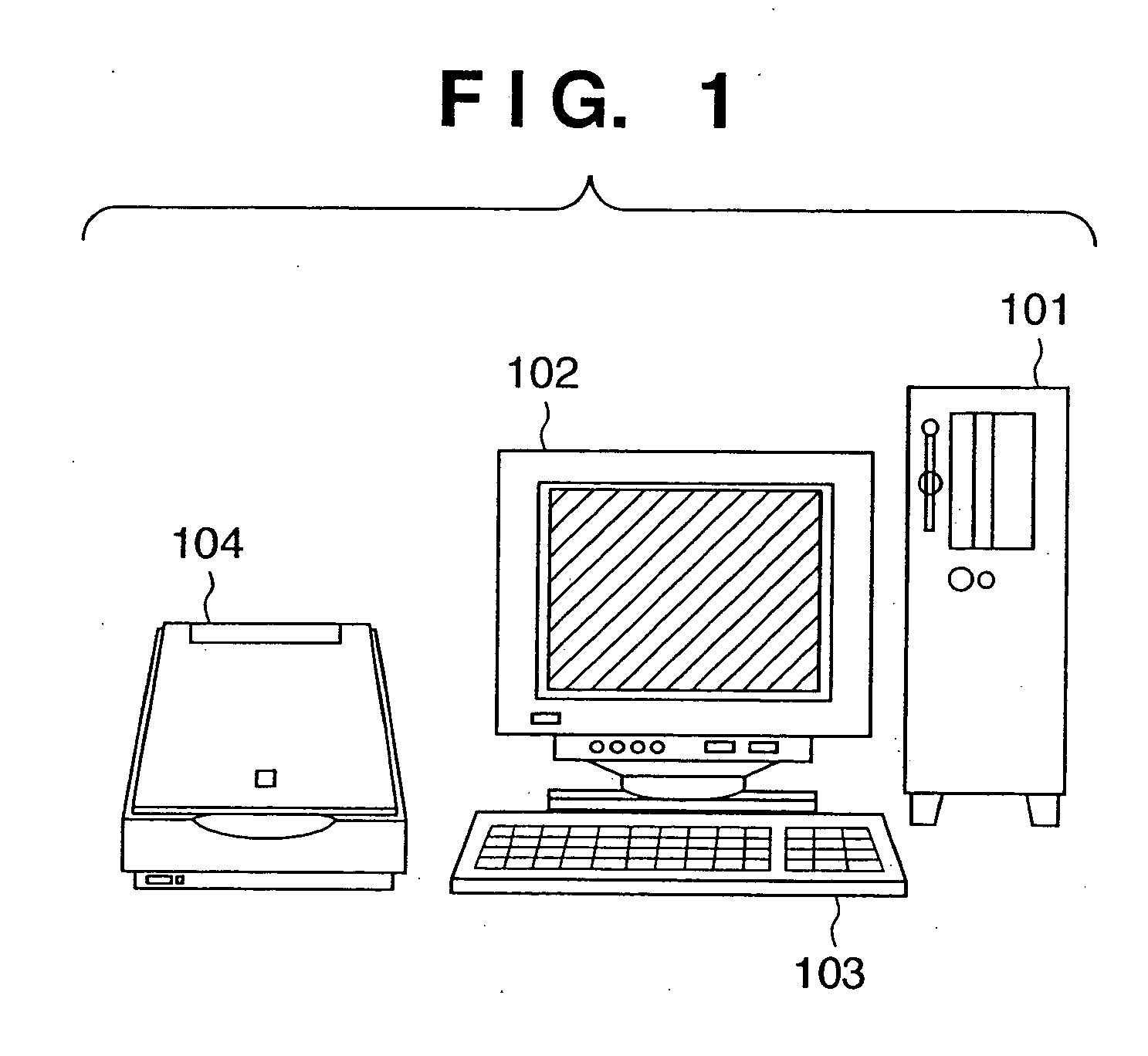Function approximation processing method and image processing method
a processing method and function approximation technology, applied in the field of function approximation processing method and image processing method, can solve the problems of reducing data amount, increasing recyclability, adaptive and high-speed processing, etc., and achieves the effect of reducing the number of points and high image quality
- Summary
- Abstract
- Description
- Claims
- Application Information
AI Technical Summary
Benefits of technology
Problems solved by technology
Method used
Image
Examples
first embodiment
[0073]FIG. 1 is an overview of a document processing apparatus according to the present invention. In FIG. 1, reference numeral 101 denotes a computer which performs document computerization processing program including programs to realize processing to be described with reference to flowcharts later. Further, the computer 101 is connected to a display unit 102 to display status and image for a user and an input unit 103 having pointing devices such as keyboard and mouse for reception of the user's operation. As the display unit 102, a CRT, an LCD or the like is employed. Numeral 104 denotes a scanner which optically reads and computerizes a document image and sends obtained image data to the computer 101. As the scanner 104, a color scanner is employed.
[0074]FIG. 2 is a block diagram showing the construction of the document processing apparatus according to the first embodiment. In FIG. 2, numeral 201 denotes a CPU which executes control programs stored in a ROM or RAM to be descri...
second embodiment
[0160] Accordingly, in the second embodiment, the noise as shown in FIGS. 11A and 11B is regarded as line segments in vertical and horizontal directions. Then tangent line segments are extracted, and only if noise exists on a tangent line segment, the noise is analyzed and filtered-out.
[0161] In the case of the above processing, regarding noise not existing on a tangent line segment, the detailed analysis and filter-out can be omitted.
[0162]FIG. 25 is a flowchart showing the processing of conversion in rough contour data to outline vector data according to the second embodiment of the present invention.
[0163] First, at step S2501, rough contour data is extracted, and tangent line segment extraction is performed on the rough contour data. At this time, unevenness portions on the rough contour which cannot be determined as noise to be filtered-out or not are handled as vertical and horizontal line segments on the rough contour. At step S2502, only noise on the tangent line segments ...
fourth embodiment
[0177]FIG. 28 is an explanatory view of accuracy determination in curve dividing according to the present invention. As shown in FIG. 28, when a point sequence Ld of a segment curve is subjected to function approximation using a characterizing point Pd, a curve L0′ is obtained. If the position of a point Pf on the curve L0′ corresponds with that of the characterizing point Pd, it can be determined that the curve approximation has been excellently performed. If the distance between the points Pd and Pf is long, there is a high probability that the approximation has failed and the obtained curve is different from the original curve.
[0178] For example, in the case of failed curve approximation, i.e., when the distance between the point Pd and the Pf is equal to or greater than a predetermined value, the curve is divided to two segment curves P0-Pd and Pd-P3 with a point P1 as a new anchor point, and the above-described function approximation processing is performed on the respective se...
PUM
 Login to View More
Login to View More Abstract
Description
Claims
Application Information
 Login to View More
Login to View More - R&D
- Intellectual Property
- Life Sciences
- Materials
- Tech Scout
- Unparalleled Data Quality
- Higher Quality Content
- 60% Fewer Hallucinations
Browse by: Latest US Patents, China's latest patents, Technical Efficacy Thesaurus, Application Domain, Technology Topic, Popular Technical Reports.
© 2025 PatSnap. All rights reserved.Legal|Privacy policy|Modern Slavery Act Transparency Statement|Sitemap|About US| Contact US: help@patsnap.com



